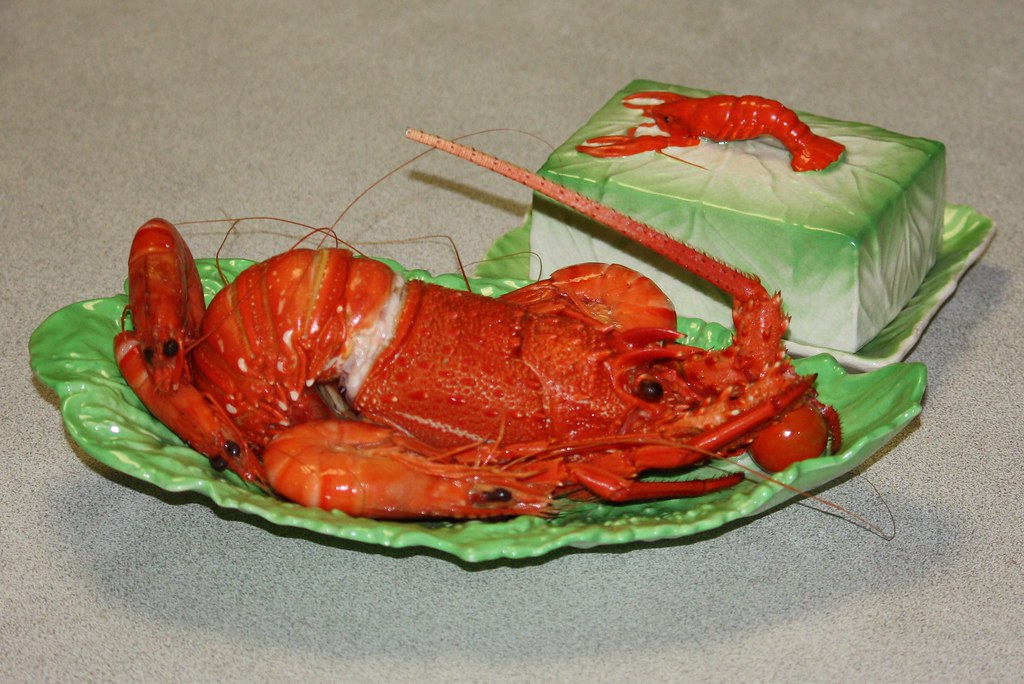Can you eat lobster roe? That is the intriguing mystery we explore today as we delve deeply into the culinary mysteries of the ocean. As ardent food lovers, we are always searching for intriguing and delicious ingredients to titillate our palates. Lobster has traditionally been praised for its luscious meat and exquisite flavours. One aspect of this crustacean, though, is frequently still a mystery: is the roe edible?
In fact, many seafood fans around the world like eating lobster roe. The bright orange sacs located inside the female lobster’s body are referred to as roe, commonly known as lobster eggs or coral. These sacs might be soft and creamy or slightly stiffer in texture and hold thousands of small eggs. The roe’s rich, saline flavour intensifies the depth and richness of recipes when it is cooked.
While some people prefer to eat the roe on its own, it is frequently added to sauces, risottos, and pasta dishes, among other foods. Whether you’re an experienced seafood eater or a novice, lobster roe offers a distinctive and tasty experience that’s well worth trying.

Can you purchase lobster roe separately?
In some locations, you can buy lobster roe on its own. The availability, however, may differ based on your area and the particular market or seafood vendor you go to. Since the roe is frequently still inside the lobster’s body cavity, it is usually easier to locate and more readily accessible when buying entire lobsters.
You should get in touch with neighbourhood fish markets, speciality seafood suppliers, or upscale grocery stores if you’re interested in buying lobster roe individually. Depending on their stock and seasonal availability, they might be able to find and give you lobster roe, either fresh or frozen.
As an alternative, you might think about contacting online seafood merchants who focus on providing fresh seafood products. They might provide customers the choice of buying lobster roe separately or as a component of a seafood deal.
Can you eat lobster roe raw, or does it require cooking?
Although lobster roe can be eaten raw, cooking it before eating is more customary. Cooking lobster roe improves its flavours and texture, making it more appealing to a wide range of diners. Any potential germs or parasites are also helped to disappear throughout the cooking procedure.
But some people prefer the distinct flavour and texture of raw lobster roe. If you decide to consume it raw, it’s essential to make sure the roe is exceptionally fresh and comes from a reputable source. Consuming raw seafood increases your risk of getting a foodborne infection, so use caution and be informed of any possible health hazards.

How is lobster roe typically prepared and cooked?
Depending on the desired meal and personal preference, there are many different ways to prepare and cook lobster roe. Here are a few typical techniques:
- Steaming: Whole lobsters and lobster roe can both be cooked. By using this technique, the delicate texture and authentic flavours are preserved. Once cooked, the roe can be eaten on its own or used as a flavouring in other meals.
- Boiling: In addition to boiling the lobster, lobster roe can also be cooked separately. With this technique, the roe’s cooking duration and texture may be precisely controlled. The roe can be consumed on its own or in a variety of dishes after being boiled.
- Sautéing: Butter or oil can give lobster roe a rich, nutty flavour when sautéed. This technique is especially well-liked when utilising roe in pasta dishes or as a garnish for seafood dishes.
- Adding lobster roe to sauces and stocks will improve the flavour of the sauces, stocks, and bisques. Before being added to these dishes, the roe is frequently strained or blended to achieve a smooth consistency.
It’s vital to remember that the size and freshness of the roe might affect how long the food needs to cook. To get the greatest outcomes, it is always advised to stick to a tried-and-true recipe or ask a culinary professional for detailed cooking instructions.

How does the flavor and texture of lobster roe differ from other types of seafood roe, such as caviar?
Despite being both types of shellfish roe, caviar and lobster roe taste and feel very differently:
- Lobster roe has a flavour that is rich, briny, slightly sweet, and salty in hints. Its flavour is frequently compared to the flavour of the sea. The roe of sturgeon fish produces caviar, which has a more delicate and buttery flavour. Depending on the particular sturgeon species, caviar’s flavour profile can range from mild and creamy to nutty and complex.
- When cooked, lobster roe has a smooth, creamy texture. It might have a velvety, silky texture that resembles custard or paste. Caviar, on the other hand, typically consists of tiny, individual eggs with a little harder texture. The caviar eggs can be small or large, and when eaten, they produce a delicate “pop” or burst that releases their distinctive flavours.
- Colour: Unlike caviar, which can range in hue from black to golden to even red depending on the species of sturgeon, lobster roe is often a brilliant orange or reddish colour.
- When cooked, lobster roe has a smooth, creamy texture. It might have a velvety, silky texture that resembles custard or paste. Caviar, on the other hand, typically consists of tiny, individual eggs with a little harder texture. The caviar eggs can be small or large, and when eaten, they produce a delicate “pop” or burst that releases their distinctive flavours.
- Colour: Unlike caviar, which can range in hue from black to golden to even red depending on the species of sturgeon, lobster roe is often a brilliant orange or reddish colour.
Relevant Articles
What Is The Black Stuff In Lobster?

Comments are closed